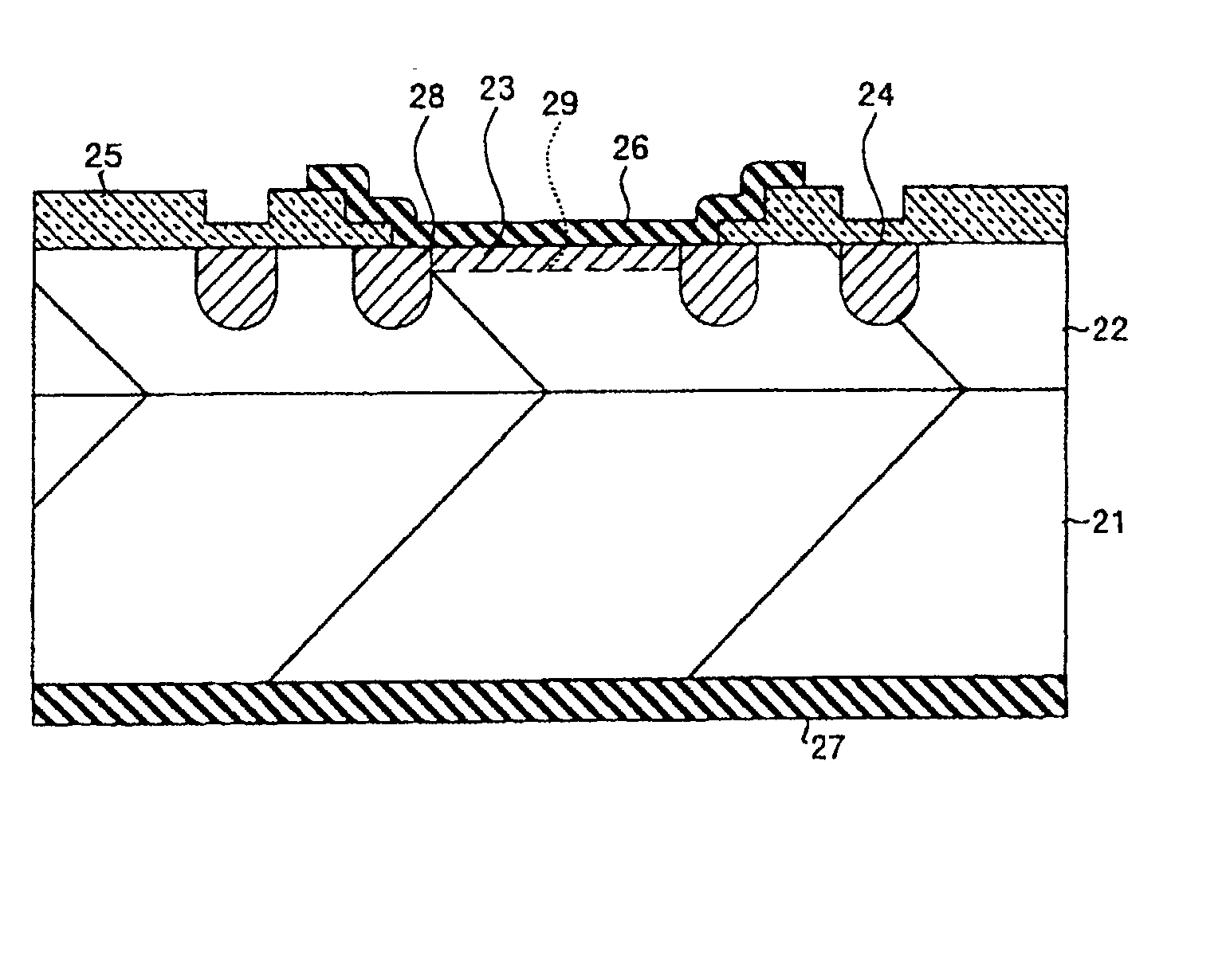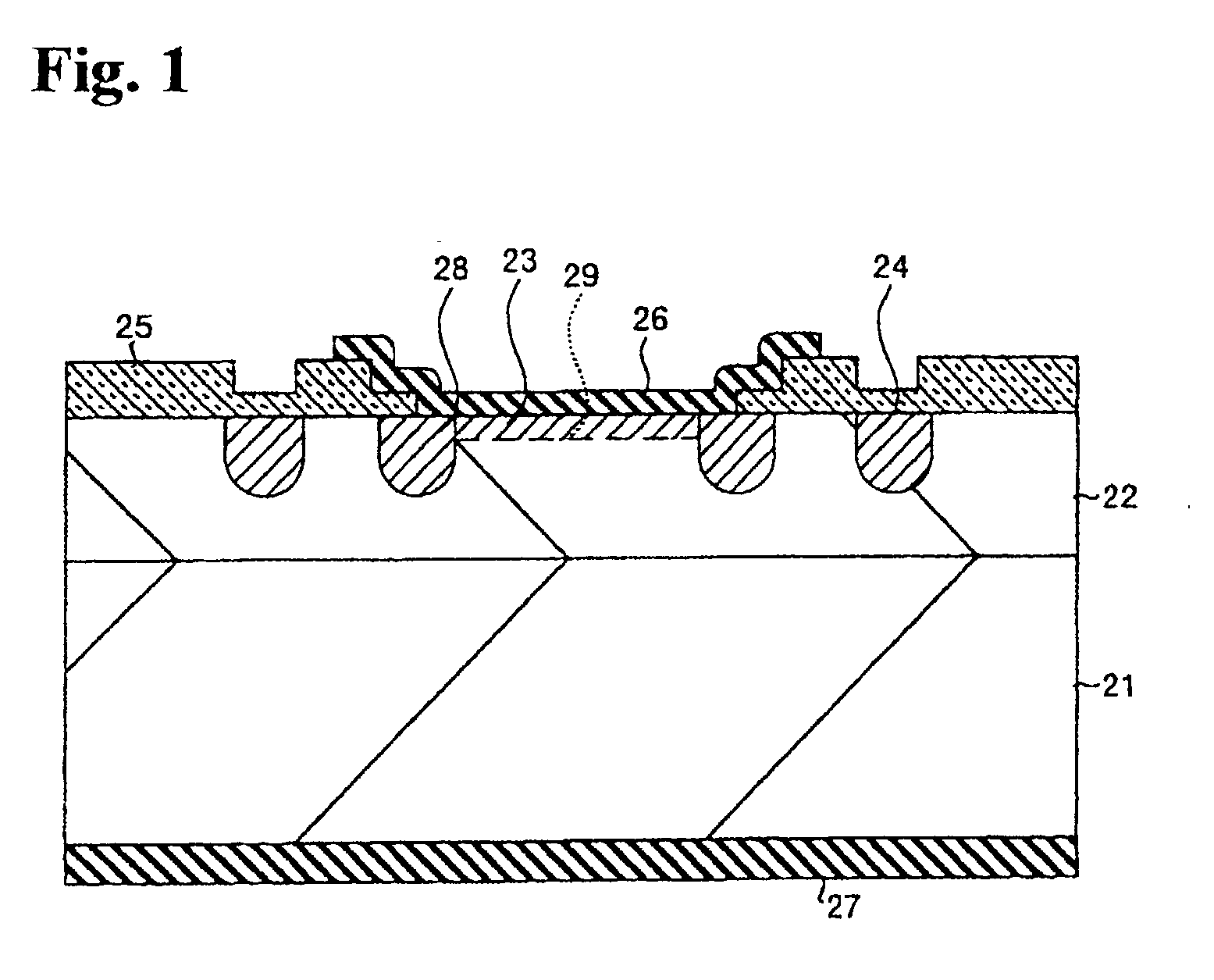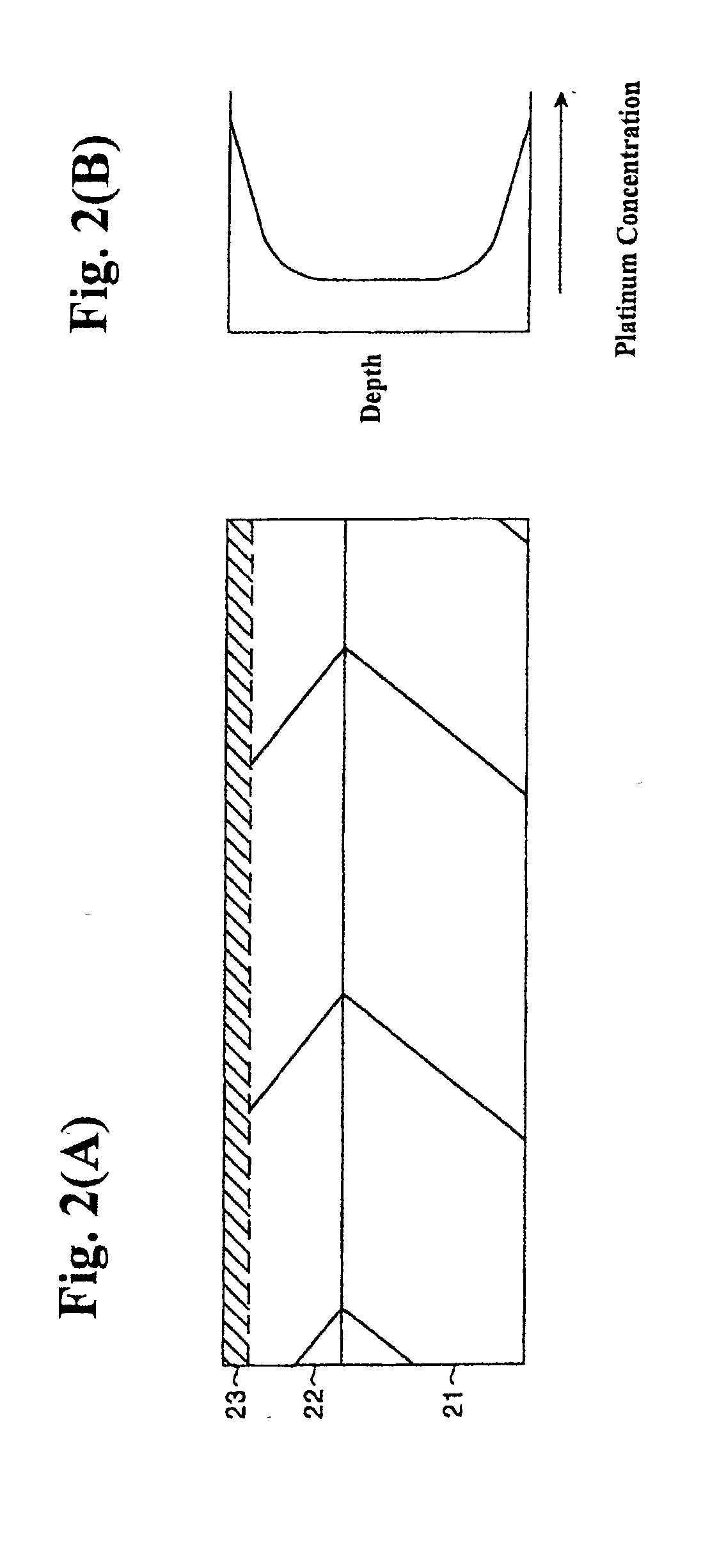Semiconductor device and manufacturing method for the same
a technology of semiconductor devices and semiconductors, applied in semiconductor devices, diodes, electrical apparatus, etc., can solve problems such as element damage, and failure to meet the requirements of the circuit, and achieve the effect of high speed and soft recovery characteristics
- Summary
- Abstract
- Description
- Claims
- Application Information
AI Technical Summary
Benefits of technology
Problems solved by technology
Method used
Image
Examples
first embodiment
[0085] Referring now to FIG. 12, the results of a forward voltage VF and a reverse recovery current peak value IRP are shown. In the related art, the `trade off` resulting from Pt diffusion condition adjustments are all hard recovery. In order to have softening, the VF is increased, or in other words, this `trade off` results in a shift to the right in the graph. Therefore, compared to the tradeoffresulting from the Pt diffusion condition adjustments in the related art, the results of the present invention show that a substantial improvement in `tradeoff` is achieved.
[0086] According to the present invention, by heat diffusion of platinum in -type semiconductor device 22, the region near the surface of semiconductor layer 22 reverses to a P-type. Since a shallow pn junction is formed by P-type reverse region 23 and -type semiconductor layer 22, the platinum concentration does not need to be any higher than necessary, and the pn junction is formed at a position where the effects of p...
second embodiment
[0091] Referring now to FIG. 14, the structure of a second embodiment of a semiconductor device is shown. The semiconductor device has an -type semiconductor substrate 41 doped with As (arsenic), an -type semiconductor layer 42 doped with P (phosphorus). Also included are a P-type reverse region 43, a Ptype guard ring region 44, an oxide film 45, a front electrode 46 and a back electrode 47.
[0092] As an example, the thickness of semiconductor substrate 41 is 500 micrometers, and its impurity concentration is 2.times.10.sup.19 cm.sup.-3. Also as an example, the thickness of semiconductor layer 42 is 60 micrometers, and its impurity concentration is 2.times.10.sup.14 cm.sup.-3.
[0093] A portion of the surface of semiconductor layer 42 is covered by oxide film 45. Reverse region 43 is formed shallowly below a region on the surface of semiconductor layer 42 not covered by oxide film 45. The junction depth xj (xj:several micrometers) of reverse region 43 (the depth of a pn junction 49) is...
third embodiment
[0106] Referring now to FIG. 20, a circuit diagram of an example of a power factor improvement circuit (PFC) that employs the semiconductor device of the present invention as a diode 61. Diode 61 may be constructed with either the first or second above-described embodiment. The PFC also includes a diode bridge 62, and alternating current input 64, an inductance 65, a capacitor 66, and a MOS transistor 63 as a switching element.
[0107] In this PFC embodiment, when transistor 63 is turned off from the on state (because of the release of energy stored in inductance 65), diode 61 becomes conductive. The now-conducting diode 61 becomes reverse biased when transistor 63 is switched on from the off state. When this occurs, diode 61 is conductive until the charge stored in diode 61 is gone. During this reverse recovery period, in addition to the current flowing to the negative charge, a reverse recovery current flows to diode 61. As a result, although there is a large current flow in the ini...
PUM
 Login to View More
Login to View More Abstract
Description
Claims
Application Information
 Login to View More
Login to View More - R&D
- Intellectual Property
- Life Sciences
- Materials
- Tech Scout
- Unparalleled Data Quality
- Higher Quality Content
- 60% Fewer Hallucinations
Browse by: Latest US Patents, China's latest patents, Technical Efficacy Thesaurus, Application Domain, Technology Topic, Popular Technical Reports.
© 2025 PatSnap. All rights reserved.Legal|Privacy policy|Modern Slavery Act Transparency Statement|Sitemap|About US| Contact US: help@patsnap.com



